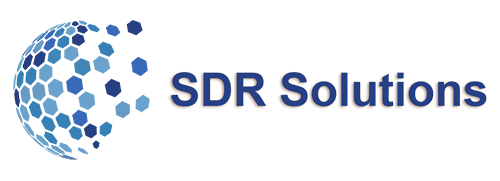Maximize Productivity with Remote Work Strategies
As remote work becomes popular, with more professionals working in virtual environments, it is important to create effective strategies to boost productivity.
Whether you are a seasoned telecommuter or exploring remote job opportunities, implementing the right strategies can help you excel in your role and make the most out of the virtual work experience.
In this article, we will explore various remote work strategies and tips to enhance your productivity while working from home or any other virtual location.
From building trust and accountability to setting clear goals and optimizing your home office setup, incorporating these strategies into your remote work routine will empower you to reach new levels of productivity and professional success.
Embrace the flexibility and advantages of remote work by adopting these proven strategies and techniques.
Let’s dive in and discover how you can unlock your full potential in the virtual work environment.
Key Points:
- Implementing effective remote work strategies is crucial for maximizing productivity in virtual work environments.
- Building trust and accountability, setting clear goals, and optimizing your home office setup are key aspects of remote work success.
- Embrace the flexibility and advantages of remote work to excel in your role and reach new levels of productivity.
Embracing the Remote Work Revolution
The remote work revolution has brought about a significant transformation in the way we work, opening up a world of possibilities for both employees and businesses.
Remote work offers a plethora of benefits that contribute to increased productivity, improved work-life balance and job satisfaction.
One of the key advantages of remote work is the autonomy it provides to individuals.
Remote workers have the freedom to choose when and where they work, allowing them to tailor their schedule to their specific needs.
This flexibility not only enables a better work-life balance but also empowers individuals to work during their most productive hours, leading to higher-quality outputs.
Flexible work arrangements, such as telework, also contribute to employee well-being.
With the elimination of lengthy commutes and the ability to create a personalized work environment, remote workers experience reduced stress levels and improved overall satisfaction.
This improved work-life balance ultimately translates into greater job fulfillment and higher employee retention rates.
In addition to the individual benefits, embracing remote work also offers significant advantages for businesses.
Remote work arrangements can significantly reduce overhead costs, such as rent and utilities, while also expanding the talent pool for recruitment.
With the ability to hire employees from anywhere around the globe, businesses can tap into a diverse range of skills and perspectives.
“The shift to remote work has proved to be a win-win for both employees and businesses. By embracing this revolution, individuals can achieve optimal work-life balance and unlock their full potential, while businesses can operate more efficiently and attract top talent.”
By embracing the remote work revolution, individuals and organizations can harness the many benefits it offers.
From increased autonomy and flexibility to improved employee well-being and reduced costs, remote work has proven to be an invaluable tool in today’s ever-evolving work landscape.
| Key Advantages of Remote Work |
|---|
| Increased autonomy and flexibility |
| Improved work-life balance |
| Enhanced productivity and job satisfaction |
| Reduced costs for businesses |
| Wider talent pool for recruitment |
Strategies for Enhancing Autonomy in Remote Teams
Building trust and accountability are essential in remote teams where physical proximity is not possible.
In virtual environments, it becomes crucial to establish effective strategies for enhancing autonomy, building trust, and setting clear goals and expectations.
By implementing these strategies, remote team members can thrive and achieve success.
Regular communication: Regular and consistent communication is the cornerstone of building trust in remote teams.
Encourage team members to communicate openly and frequently, ensuring that everyone has a voice and feels heard.
Transparency: Foster a culture of transparency by openly sharing information, updates, and decisions.
This helps remote team members feel involved and part of the decision-making process, enhancing their autonomy and trust in the team.
Fostering a culture of trust: Building trust in remote teams requires creating a supportive and inclusive work environment.
Encourage collaboration, value diverse perspectives, and promote a culture where mistakes are seen as opportunities for growth rather than failures.
Setting clear goals and expectations: Establishing clear and measurable goals is vital for remote team members to understand their responsibilities and have a roadmap for success.
Ensure that goals are communicated effectively and aligned with the overall team objectives.
By embracing these strategies, remote teams can enhance autonomy, build trust, and create a productive and collaborative work environment.
| Benefits of Enhancing Autonomy in Remote Teams | Strategies for Enhancing Autonomy |
|---|---|
| 1. Increased job satisfaction | – Regular communication |
| 2. Higher employee engagement | – Transparency |
| 3. Improved productivity | – Fostering a culture of trust |
| 4. Enhanced creativity and innovation | – Setting clear goals and expectations |
Optimizing Home Office Setups for Productivity
An optimized home office setup is crucial for remote workers to maintain productivity.
Creating an ergonomic workspace, investing in comfortable furniture, ensuring proper lighting, and minimizing distractions are key factors that contribute to a conducive work environment.
By implementing these practical tips, remote workers can enhance their focus, motivation, and overall productivity.
One essential aspect of optimizing a home office setup is investing in comfortable furniture.
A supportive chair with adjustable features and proper lumbar support is vital for maintaining good posture and preventing discomfort or strain during long work hours.
Additionally, a spacious desk that can accommodate all necessary equipment and allows for proper organization promotes efficiency and reduces clutter.
Proper lighting is another crucial factor in creating an ergonomic workspace. Natural light is preferred as it helps reduce eye strain and boosts mood and productivity.
Positioning the desk near a window or using adjustable task lighting can ensure adequate illumination throughout the work area.
Minimizing distractions is essential for maintaining focus and productivity. This can be achieved by designating a specific area for work, separate from areas of relaxation or daily activities.
Decluttering the workspace and keeping it organized can also help reduce distractions and create a conducive environment for concentration.
Furthermore, incorporating elements that enhance productivity and well-being can contribute to an optimized home office setup.
Plants, for example, not only add aesthetic appeal but also help purify the air and improve overall well-being.
Incorporating ergonomic accessories, such as a keyboard and mouse, can also prevent discomfort and repetitive strain injuries.
Creating an ergonomic home office setup is crucial for remote workers to optimize their productivity and well-being. By investing in comfortable furniture, ensuring proper lighting, and minimizing distractions, individuals can create an environment that promotes focus, motivation, and overall work effectiveness.

Time Management Techniques for Remote Employees
Effective time management is crucial for remote employees to maintain focus, accomplish tasks efficiently, and maximize productivity.
In this section, we will explore various time management techniques that remote workers can implement to optimize their workdays and achieve their goals.
One valuable technique is the use of time tracking tools, which enable remote employees to monitor their work habits and analyze how they allocate their time.
By tracking their activities, remote workers can gain insights into their most productive hours and identify areas where they can improve efficiency.
“Time is the scarcest resource, and unless it is managed, nothing else can be managed.” – Peter Drucker
In addition to time tracking tools, establishing a structured daily routine can help remote employees effectively manage their time.
Creating a schedule with dedicated blocks of time for specific tasks allows for focused work without distraction.
By setting boundaries and sticking to a routine, remote workers can maintain a sense of structure and prioritize their responsibilities.
Another effective time management technique is the practice of prioritization through task analysis.
Remote employees can identify their most important tasks and categorize them based on urgency and importance.
This helps in allocating time and resources appropriately, ensuring that critical tasks are completed first.
Furthermore, utilizing productivity tools and apps can assist remote workers in managing their time more efficiently.
These tools offer features such as task lists, reminders, and time blocking functionalities, aiding in organizing and prioritizing work effectively.
- Set clear goals and deadlines for each task
- Break down large projects into smaller, manageable tasks
- Avoid multitasking and focus on one task at a time
- Minimize distractions by creating a dedicated workspace
- Take regular breaks to rejuvenate and maintain productivity
By implementing these time management techniques, remote employees can optimize their productivity and achieve a healthy work-life balance.
Effective time management not only increases efficiency but also reduces stress and enhances overall job satisfaction in a remote work environment.
Strengthening Communication with Remote Work Tools
Effective communication is essential for remote work teams to collaborate successfully and achieve their goals.
By adopting the right digital platforms and implementing virtual collaboration best practices, remote team members can enhance communication, share ideas, and work together seamlessly.
Let’s explore some key aspects of remote work communication tools and virtual collaboration best practices:
“Good communication does not just happen; it is a skill that needs to be nurtured, practiced, and refined.” – Simon Sinek
Choosing the Right Digital Platforms
When it comes to remote work, selecting the appropriate digital platforms for communication and collaboration is crucial.
Different tools serve different purposes, so it’s important to assess the specific needs and requirements of your team. Some popular remote work communication tools include:
- Video Conferencing: Tools like Zoom, Microsoft Teams, and Google Meet enable face-to-face communication, providing a more personal touch to virtual meetings and discussions.
- Instant Messaging: Platforms such as Slack, Microsoft Teams, and Slack allow real-time communication, facilitating quick information sharing and team collaboration.
- Project Management: Tools like Asana, Trello, and Monday.com help remote teams streamline project workflows, assign tasks, and track progress.
- Document Collaboration: Applications like Google Drive, Microsoft OneDrive, and Dropbox enable multiple team members to edit and collaborate on documents simultaneously.
Virtual Collaboration Best Practices
While having the right tools is essential, knowing how to utilize them effectively is equally important. Here are some best practices for virtual collaboration in remote teams:
- Establish Communication Guidelines: Define clear guidelines for communication, including response times, preferred channels for different types of communication, and expectations for regular check-ins and updates.
- Promote Active Listening: Encourage team members to actively listen and provide feedback during virtual discussions, ensuring everyone’s voice is heard and understood.
- Schedule Regular Virtual Meetings: Organize regular team meetings and one-on-one sessions to maintain open lines of communication, foster team cohesiveness, and address any challenges or concerns.
- Utilize Visual Aids and Screensharing: Take advantage of visual aids, such as screen sharing and virtual whiteboards, to enhance communication and facilitate better understanding of ideas and concepts.
- Create a Collaborative Workspace: Utilize project management tools and document collaboration platforms to centralize information, facilitate teamwork, and ensure everyone has access to the necessary resources.
- Encourage Informal Communication: Foster an environment that encourages informal communication, such as virtual watercooler chats or dedicated channels for social interaction, to promote team bonding and mitigate feelings of isolation.
By leveraging the right remote work communication tools and implementing virtual collaboration best practices, remote teams can overcome communication barriers, maintain strong connections, and work together efficiently towards shared objectives.
Effective communication is the key to success in remote work, fostering collaboration, innovation, and productivity.
The Impact of Reducing Virtual Meetings on Focus
Virtual meetings have become an integral part of remote work, allowing teams to collaborate and communicate effectively.
However, excessive meetings can hinder productivity and disrupt focus.
It is essential to strike a balance and optimize virtual meetings to maintain productivity levels.
Reducing the number of virtual meetings can have a significant positive impact on focus in remote work.
By minimizing unnecessary meetings and streamlining communication channels, remote workers can dedicate more time and attention to essential tasks.
This reduction in virtual meetings allows individuals to focus on their work without interruptions, leading to improved productivity and efficiency.
Implementing virtual meeting best practices is crucial for maximizing focus and ensuring that these meetings are productive. Here are some key strategies to consider:
- Purpose-driven meetings: Clearly define the purpose and objectives of each virtual meeting to ensure that participants understand why their presence is required. This helps minimize the number of unnecessary meetings and allows individuals to prioritize their focus on meetings that truly require their input.
- Agenda and time management: Provide an agenda before the meeting to outline the topics that will be discussed. Allocate specific time slots for each agenda item to keep the meeting focused and prevent it from running over time.
- Engagement and participation: Encourage active participation from all meeting attendees to keep their attention and engagement levels high. Implement interactive elements such as polls, Q&A sessions, and breakout discussions to maintain focus and involvement.
- Limit meeting duration: Prioritize brevity and efficiency in virtual meetings. Set a maximum time limit for each meeting, ensuring that discussions remain focused and concise.
- Record and share meeting summaries: Record important meetings and share the summary with participants afterward. This allows individuals to review the key points discussed and minimizes the need for additional meetings or follow-ups.
By reducing virtual meetings and following best practices, remote workers can effectively manage their time, maintain focus, and enhance overall productivity.
Streamlined and purposeful virtual meetings create a conducive environment for collaboration and ensure that essential tasks receive the necessary attention.
Remember: A well-planned and executed virtual meeting can yield productive outcomes, while excessive and unproductive meetings can hinder focus and productivity.
Striking the right balance and optimizing virtual meetings are key to success in remote work environments.

Evaluating and Measuring Remote Work Productivity
Measuring remote work productivity is essential for organizations to monitor performance and identify areas for improvement.
By implementing effective evaluation and measurement strategies, remote teams can optimize their productivity and achieve their goals.
This section will delve into the role of performance metrics, feedback, and continuous improvement in remote work.
Performance metrics provide valuable insights into the effectiveness of remote work practices.
By tracking key metrics such as output quantity, quality, and timeliness, organizations can understand the overall productivity of their remote teams.
These metrics can be tracked through project management tools, time tracking software, and collaborative platforms.
Feedback is crucial for continuous improvement in remote work.
Regular communication channels should be established to facilitate feedback sharing among team members and managers.
This could include virtual team meetings, one-on-one discussions, or anonymous feedback surveys.
Encouraging open and constructive feedback helps identify areas of improvement and promotes a culture of learning and growth.
In addition to performance metrics and feedback, organizations can implement various strategies to measure and enhance remote work productivity.
Some effective approaches include:
- Setting clear and measurable goals: Establishing specific, achievable goals ensures that remote employees have clear expectations and can focus their efforts on the most important tasks.
- Defining key performance indicators (KPIs): Identifying KPIs relevant to remote work helps track progress and measure success. KPIs could include customer satisfaction, project completion rates, or revenue generated.
- Regular performance reviews: Conducting periodic performance reviews allows organizations to assess individual and team productivity, provide constructive feedback, and identify areas for growth and development.
- Collaborative performance dashboards: Utilizing digital dashboards or performance management tools can provide real-time visibility into remote team performance, promoting transparency and accountability.
- Benchmarking and industry comparisons: Comparing remote work productivity metrics against industry standards or peer organizations can provide valuable insights for improvement and identify best practices.
By leveraging performance metrics, feedback mechanisms, and implementing strategic measurement strategies, organizations can evaluate and optimize remote work productivity.
Continuous evaluation and improvement efforts are key to achieving long-term success in remote work environments.
“Measuring remote work productivity is not just about tracking numbers; it’s also an opportunity to foster a culture of continuous improvement and support the growth of remote teams.” – Laura Thompson, HR Director at XYZ Corporation
| Benefits of Measuring Remote Work Productivity | Challenges in Measuring Remote Work Productivity |
|---|---|
|
|
- Identifying top performers: Measuring remote work productivity allows organizations to identify employees who consistently deliver high-quality work and contribute to the success of projects.
- Tracking project progress: Performance metrics help track the progress of remote projects, allowing teams to make informed decisions and adjust strategies as needed.
- Identifying bottlenecks and inefficiencies: Analyzing productivity metrics uncovers bottlenecks and inefficiencies in remote workflows, enabling organizations to implement process improvements.
- Optimizing resource allocation: Remote work productivity metrics can guide resource allocation decisions, ensuring that teams have the necessary support and tools to accomplish their tasks effectively.
- Improving goal alignment: Measuring productivity provides visibility into how well remote employees align with organizational goals, enabling managers to provide targeted guidance and support.
The Psychological Benefits of Flexible Work Schedules
Flexible work schedules offer remote employees a range of psychological benefits, contributing to their overall well-being and work-life balance.
By understanding and accommodating individual work patterns, organizations can create a positive and productive environment for their remote workforce.
One of the key advantages of flexible work schedules is the ability to prioritize personal and family responsibilities alongside work commitments.
With the flexibility to choose their working hours, remote employees can better manage their personal and professional lives, leading to reduced stress levels and improved mental well-being.
According to a study conducted by Harvard Business Review, flexible work schedules positively impact employee engagement and job satisfaction. It allows individuals to align their work with their natural energy rhythms, resulting in higher levels of focus, creativity, and productivity.
Moreover, flexible work arrangements provide employees with a sense of autonomy and control over their work.
This autonomy fosters a greater sense of ownership, satisfaction, and motivation, leading to increased job satisfaction and loyalty to the organization.
In addition to enhanced work-life balance and increased autonomy, flexible work schedules enable remote employees to better manage their individual work patterns.
By understanding their most productive hours and aligning their schedules accordingly, employees can optimize their performance and deliver high-quality work.
In conclusion, flexible work schedules not only contribute to work-life balance and employee well-being but also result in improved productivity and job satisfaction.
By embracing flexibility and understanding individual work patterns, organizations can create a positive and supportive remote work culture that maximizes employee potential.
Supporting Employee Well-Being in Remote Settings
Remote work can pose challenges to employee well-being, making it crucial for organizations to provide support and resources.
Prioritizing the mental and physical well-being of remote employees is essential for maintaining a positive and productive work environment.
By promoting employee health and well-being, organizations can ensure that their remote workforce remains engaged, motivated, and resilient.
There are several strategies that organizations can implement to support employee well-being in remote settings:
- Mental Health Resources: Organizations should offer access to mental health resources and support services for remote employees.
This can include virtual therapy sessions, employee assistance programs, or online mental health platforms.
Creating a safe and supportive space for employees to address their mental health needs is crucial for their overall well-being. - Flexible Schedules: Remote work provides an opportunity for employees to have more control over their schedules.
Offering flexible work hours allows employees to balance their personal and professional responsibilities effectively.
This can help alleviate stress and promote a healthy work-life balance. - Promoting Healthy Habits: Encouraging remote employees to prioritize their physical well-being is essential.
Organizations can provide resources and information on maintaining a healthy lifestyle, including tips for exercise, nutrition, and stress management.
Implementing virtual wellness programs or challenges can also foster a sense of community and accountability among remote team members.
By implementing these strategies, organizations can create a culture of well-being in remote settings.
Prioritizing employee health and well-being not only improves job satisfaction and retention but also enhances overall productivity and performance.
Remote Work: Opportunities and Challenges
The rise of remote work has opened up a world of opportunities for individuals and organizations.
One of the most appealing aspects of remote work is the possibility to embrace the digital nomad lifestyle.
With the freedom to work from anywhere, individuals can explore new destinations while still pursuing their careers.
Moreover, remote work offers increased job opportunities. Companies are now able to tap into a global talent pool, allowing them to access specialized skills and expertise from around the world.
This presents significant advantages for both employers and job seekers, as talented professionals can find remote work opportunities that align with their skills and passions.
However, remote work also comes with its own unique set of challenges.
The lack of traditional office settings and face-to-face interactions can make collaboration and communication more complex.
It requires individuals to adapt to new ways of working and find efficient methods for virtual collaboration.
To address these challenges, remote workers can implement strategies such as utilizing remote work communication tools and adopting effective digital platforms.
These tools can enhance communication and facilitate seamless collaboration among team members, regardless of their geographical locations.
Additionally, remote workers may face difficulties in maintaining work-life balance and managing their time effectively.
Without the clear boundaries of a traditional office environment, it is important for remote workers to establish routines and set boundaries to ensure they can prioritize their work tasks while also taking care of their personal well-being.
By acknowledging and addressing these challenges, remote workers can create a successful and fulfilling remote work experience.
It is essential to find strategies and tools that work best for each individual and organization to maximize the benefits and overcome the obstacles that come with remote work.
Main Thoughts
Throughout this article, we have explored various strategies and techniques to maximize productivity in remote work settings.
By implementing these strategies, both individuals and organizations can thrive in the virtual work environment and achieve optimal results.
Building trust and accountability are essential in remote teams. Regular communication, transparency, and fostering a culture of trust contribute to a cohesive and productive virtual team.
Setting clear goals and expectations provides remote team members with a roadmap for success, ensuring everyone understands their responsibilities and can contribute effectively.
An optimized home office setup is crucial for maintaining productivity while working remotely.
Investing in comfortable furniture, ensuring proper lighting, and minimizing distractions all contribute to creating an ergonomic workspace.
By creating a dedicated and organized workspace, remote workers can stay focused and motivated throughout the workday.
Time management is key in remote work, and utilizing time tracking tools can help remote employees analyze their work habits and optimize their time.
Effective communication is also vital, and adopting the right digital platforms and best practices for virtual collaboration facilitate strong communication and ensure that remote team members can effectively work together toward common goals.
FAQ
What are some strategies for maximizing productivity in remote work?
Some strategies for maximizing productivity in remote work include setting clear goals and expectations, creating an optimized home office setup, effectively managing time, strengthening communication using remote work tools, and reducing virtual meetings to improve focus.
What are the benefits of embracing the remote work revolution?
Embracing the remote work revolution offers benefits such as increased autonomy, flexibility in work arrangements, improved work-life balance, and access to remote job opportunities.
How can trust and accountability be built in remote teams?
Trust and accountability can be built in remote teams through regular communication, transparency, fostering a culture of trust, and setting clear goals and expectations for team members.
How can I optimize my home office setup for remote work productivity?
To optimize your home office setup for remote work productivity, invest in comfortable furniture, ensure proper lighting, minimize distractions, and create a dedicated and organized workspace.
What time management techniques are beneficial for remote employees?
Remote employees can benefit from time management techniques such as utilizing time tracking tools to analyze work habits, prioritizing tasks, setting deadlines, and maintaining a structured work schedule.
What are some effective tools for communication and collaboration in remote work?
Some effective tools for communication and collaboration in remote work include video conferencing platforms, project management software, instant messaging apps, and file-sharing platforms.
How can reducing virtual meetings improve focus in remote work?
Reducing virtual meetings can improve focus in remote work by minimizing interruptions, allowing more time for deep work, and enabling employees to dedicate their attention to essential tasks and projects.
How can remote work productivity be evaluated and measured?
Remote work productivity can be evaluated and measured by using performance metrics, providing feedback and coaching, conducting regular performance reviews, and tracking completed tasks and project milestones.
What are the psychological benefits of flexible work schedules in remote work?
Flexible work schedules in remote work provide psychological benefits such as enhanced work-life balance, reduced stress levels, increased job satisfaction, and improved overall employee well-being.
How can organizations support employee well-being in remote settings?
Organizations can support employee well-being in remote settings by providing mental health resources, promoting flexible work schedules, encouraging breaks and self-care, and fostering a culture that emphasizes the importance of work-life balance.
What are the opportunities and challenges of remote work?
Remote work offers opportunities such as the digital nomad lifestyle and increased job opportunities, but it also presents challenges such as maintaining work-life balance, overcoming communication barriers, and addressing potential feelings of isolation.





